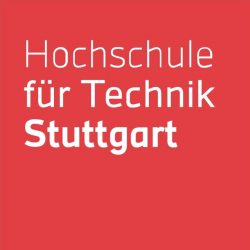Our cities face significant challenges, particularly regarding mobility and quality of life. Increasing traffic and the associated environmental impacts are progressively affecting urban life. The need to make mobility more sustainable is now ever-present, which goes along with an acceptance of the suggested changes. „Every change means that a person has to leave his known and habitual actions, his environment, his habits, his role, in short his status quo“(Frey et al., 2008, p. 281). A key question, therefore, is: How can the acceptance of sustainable mobility be increased among citizens? This is precisely where Joshua Klein’s bachelor thesis comes in, conducted as part of the research project „Streetmoves4iCity“ (read more here about this project). The thesis explores how immersive technologies like Virtual Reality (VR) and Augmented Reality (AR) can help to increase citizens’ acceptance of traffic-reducing measures by making the positive effects of the change visible.
Virtual Reality (VR): Creates a fully digital environment in which the user immerses themselves. Using headsets, the real world is completely blocked out, and the user is placed in a computer-generated world that is interactive and immersive.
Augmented Reality (AR): Overlays digital information onto the real world. Using smartphones or glasses, users see the real environment, enhanced with digital elements.

Research goal: The aim of the study was to determine whether and to what extent immersive technologies can promote the acceptance of measures aimed at reducing urban road traffic by visualizing the positive effects of these measures. Specifically, it examined whether VR and AR are perceived differently and how immersion—the feeling of being absorbed in a virtual environment—impacts acceptance. These questions are crucial, as the successful implementation of sustainable mobility concepts often depends on the public’s willingness to accept change.
Research overview: The empirical study was conducted in the Leonhardsvorstadt district of Stuttgart and aimed to simulate the experience of traffic-reducing measures through VR and AR. The investigation involved two independent groups: one group experienced the planned measures through a VR simulation, while the other group used AR. The VR group was shown a 360-degree video of a previously implemented traffic trial in Mannheim (see here for another study using this methodology), while the AR group experienced a live augmented reality simulation using a Microsoft HoloLens2 mixed-reality head-mounted display. In both cases, participants’ acceptance of the measures was assessed both before and after the experience, along with their perceived immersion. A total of 44 people took part in the study.

The central hypothesis was that the experience of the positive effects of traffic-reducing measures through VR and AR would lead to a significant increase in acceptance of these measures. Additionally, the study examined whether there were differences in perceived immersion between the two technologies and whether this mediated the effect on acceptance. Another research goal was to explore whether familiarity with the respective technology influenced immersion.
The study was supplemented by qualitative interviews to identify what is currently lacking in public spaces in the Leonhardsvorstadt, how car parking spaces can be used more efficiently, and what suggestions participants had for improving public spaces by reducing traffic flow.
Main results
Increased acceptance: First, it was confirmed that both VR and AR can contribute to increasing the acceptance of measures aimed at reducing urban road traffic. This is an important finding, as it shows that immersive technologies can be valuable tools for citizen participation and urban planning.
VR and AR are equally convincing: Interestingly, there were no significant differences between the two technologies in terms of their effect on acceptance. Both VR and AR were equally convincing to participants. This suggests that both technologies are equally suitable for involving citizens early in planning processes and demonstrating the benefits of traffic measures.
Level of immersion has no effect: Surprisingly, the perceived immersion played a smaller role than expected. The results suggest that it is less about the depth of the immersive experience and more about making changes tangible and understandable. Even a high level of immersion does not necessarily lead to a change in opinion, as the impact depends more on the conveyed facts.
No mediation by familiarity with technology: Another question was whether familiarity with the respective technology could influence the perceived immersion. However, this assumption was not confirmed. Participants’ familiarity with VR or AR had no significant effect on their immersion experience. Therefore, even people with little experience with these technologies could benefit from their use.
Desire for parks, leisure facilities, and cleanliness: The qualitative responses emphasized an improvement in quality of life. Park-like structures were often desired, followed by an expansion of sustainable infrastructure, gastronomy, cultural offerings, and improved cleanliness in the district.
Conclusion
In summary, Joshua Klein’s thesis demonstrates that both virtual and augmented reality are effective tools for promoting the acceptance of measures aimed at reducing urban road traffic. The immersive experience of such measures through technologies like VR and AR gives citizens the opportunity to realistically perceive planned changes and better understand their benefits. A key advantage of the technology is that it not only stimulates citizens‘ imagination but also helps reduce uncertainties and build trust in the feasibility of such measures. These findings offer valuable insights for urban planning and citizen participation, particularly concerning the planning of sustainable mobility concepts. With VR and AR, cities like Stuttgart have an effective means of involving citizens early in planning processes and illustrating the positive impact of such projects on quality of life.
Further interesting contributions on this topic can be foundhere: Virtual Reality (VR) in urban planning – a helpful use of technology to increase the acceptance of a reduction in car traffic – Innovation Acceptance Lab
References
Frey, D., Gerkhardt, M. & Fischer, P. (2008). Erfolgsfaktoren und Stolpersteine bei Veränderungen. In D. Beck, R. Fisch, A. Müller & D. Beck (Hrsg.), Veränderungen in Organisationen: Stand und Perspektiven (S. 281- 299). VS Verlag für Sozialwissenschaften. https://doi.org/10.1007/978- 3-531-91166-3

